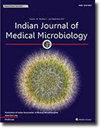The case for a Klebsiella pneumoniae vaccine: A public health priority
IF 1.4
4区 医学
Q4 IMMUNOLOGY
引用次数: 0
Abstract
Background
Klebsiella pneumoniae is a significant opportunistic pathogen responsible for a range of infections, particularly in immunocompromised individuals. The emergence of multidrug-resistant strains poses a critical challenge to public health, necessitating the development of effective vaccines. Traditional vaccine strategies have been limited by the pathogen's genetic diversity and the presence of virulent serotypes.
Objective
This review aims to evaluate current advancements in vaccine development against K. pneumoniae, focusing on innovative approaches such as multiepitope subunit vaccines, reverse vaccinology, and the use of outer membrane proteins (OMPs) as key targets. We also discuss the importance of identifying conserved antigens to ensure broad protection across diverse strains.
Content
The review covers several key areas of vaccine development, including conjugate vaccines, nanovaccines, and bioconjugate approaches, which have shown potential in eliciting immune responses. Conjugate vaccines, which couple polysaccharides with carrier proteins, have been explored to target capsular polysaccharides and lipopolysaccharides, two critical components of K. pneumoniae's virulence mechanisms. Nanotechnology-based vaccines offer innovative solutions by enhancing antigen stability and immune response. Additionally, reverse vaccinology and immunoinformatics have been used to design multiepitope vaccines targeting conserved antigens. The review underscores the challenges in advancing these vaccines through clinical trials and emphasizes the need for ongoing research to develop effective, broad-spectrum vaccines to combat K. pneumoniae infections.
肺炎克雷伯菌疫苗的案例:公共卫生重点
背景:肺炎克雷伯菌是一种重要的机会性病原体,可引起一系列感染,特别是在免疫功能低下的个体中。耐多药菌株的出现对公共卫生构成重大挑战,因此必须开发有效的疫苗。传统的疫苗策略受到病原体遗传多样性和毒力血清型的限制。目的:本文综述了目前肺炎克雷伯菌疫苗开发的进展,重点介绍了多表位亚基疫苗、反向疫苗学和利用外膜蛋白(OMPs)作为关键靶点的创新方法。我们还讨论了鉴定保守抗原以确保在不同菌株中广泛保护的重要性。内容:本综述涵盖了疫苗开发的几个关键领域,包括偶联疫苗、纳米疫苗和生物偶联方法,它们已显示出引发免疫反应的潜力。结合疫苗是一种将多糖与载体蛋白偶联的疫苗,研究人员已经对荚膜多糖和脂多糖这两种肺炎克雷伯菌毒力机制的关键成分进行了研究。基于纳米技术的疫苗通过增强抗原稳定性和免疫反应提供了创新的解决方案。此外,反向疫苗学和免疫信息学已被用于设计针对保守抗原的多表位疫苗。该综述强调了通过临床试验推进这些疫苗的挑战,并强调需要进行持续研究,开发有效的广谱疫苗,以对抗肺炎克雷伯菌感染。
本文章由计算机程序翻译,如有差异,请以英文原文为准。
求助全文
约1分钟内获得全文
求助全文
来源期刊

Indian Journal of Medical Microbiology
IMMUNOLOGY-
CiteScore
2.20
自引率
0.00%
发文量
154
审稿时长
73 days
期刊介绍:
Manuscripts of high standard in the form of original research, multicentric studies, meta analysis, are accepted. Current reports can be submitted as brief communications. Case reports must include review of current literature, clinical details, outcome and follow up. Letters to the editor must be a comment on or pertain to a manuscript already published in the IJMM or in relation to preliminary communication of a larger study.
Review articles, Special Articles or Guest Editorials are accepted on invitation.
 求助内容:
求助内容: 应助结果提醒方式:
应助结果提醒方式:


